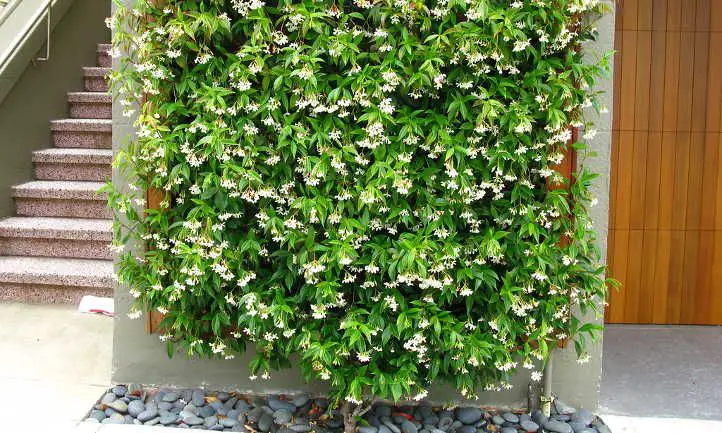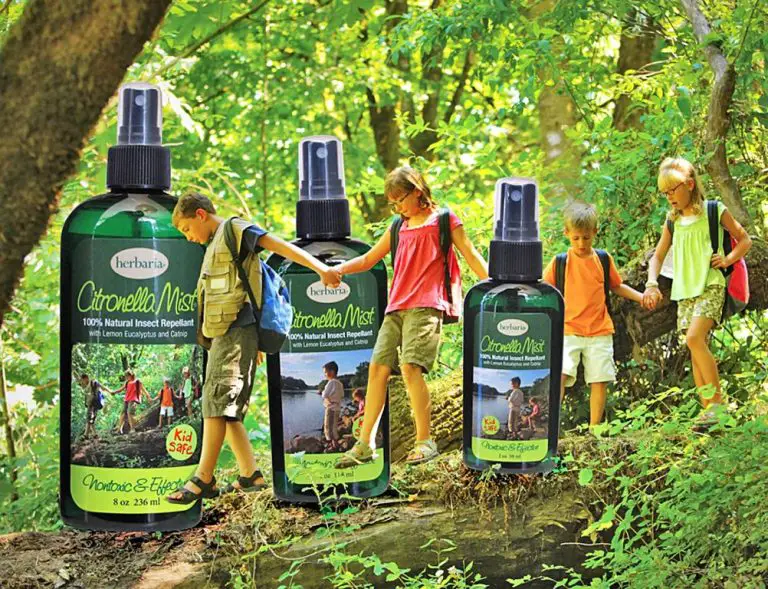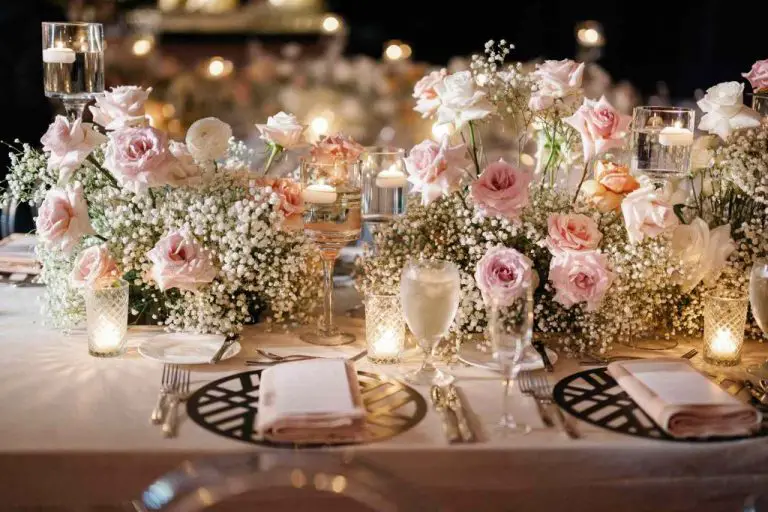Can You Plant Honeysuckle And Jasmine Together?
Introducing Honeysuckle and Jasmine
Honeysuckle and jasmine are both popular vine plants well-known for their beautifully fragrant flowers. Honeysuckles (Lonicera species) are deciduous vines that produce tubular or two-lipped flowers in colors like white, yellow, orange or red, depending on the variety. They are native to temperate regions of the Northern Hemisphere. Jasmines (Jasminum species) can be either deciduous or evergreen vines with star-shaped white flowers that emit a delicate, sweet scent. Most jasmine varieties are native to warmer tropical and subtropical climates. Both honeysuckle and jasmine are prized by gardeners for their vigorous growth and intensely fragrant blooms that can perfume an entire garden. Their vining growth habits also make them popular choices for growing on trellises, arbors and fences.
According to this gardening discussion, star jasmine (Trachelospermum jasminoides) is one of the most fragrant varieties. For honeysuckles, trumpet honeysuckle (Lonicera sempervirens) and Japanese honeysuckle (L. japonica) are known for having very fragrant blooms and growth habits suitable for gardens.
Compatibility Factors
When considering planting jasmine and honeysuckle together, it’s important to evaluate their compatibility in terms of sunlight, water, and soil needs, as these factors will determine how well the plants will thrive side-by-side.
Both jasmine and honeysuckle prefer full sun and do best with at least 6 hours of direct sunlight per day. Partial shade is tolerated but can result in reduced flowering. Jasmines tend to be more particular about sunlight, so situating them together in an area with maximum sun exposure is ideal.
These vines also share a preference for moist, well-draining soil. Although tolerant of short periods of drought, both will suffer without adequate moisture. Honeysuckles in particular require consistently damp soil. Group planting them makes maintaining optimal soil moisture levels for both plants easier.
When it comes to soil type, jasmines and honeysuckles are adaptable to various soils with near-neutral pH. However, they thrive best in fertile, humus-rich soil. Amending native soil with compost or other organic material can help create ideal growing conditions for both.
Overall, jasmine and honeysuckle are compatible from the standpoint of sunlight, water, and soil preferences. Paying attention to these key factors will make it easier to grow them successfully together.
Planting Considerations
When planting honeysuckle and jasmine together, it’s important to consider spacing, timing, and support structures. Honeysuckle and jasmine vines can grow aggressively, so make sure to leave enough space between plants to prevent overcrowding. The University of Minnesota Extension recommends planting vining honeysuckles at least 6-10 feet apart [1]. For jasmines, allow at least 6 feet between plants or structures [2].
When to plant is also key. Honeysuckles and jasmines should be planted in spring once the threat of frost has passed. Container-grown plants can be planted later in the summer after being hardened off. Just make sure to water the plants well until they establish.
Finally, both honeysuckle and jasmine will need sturdy support structures to climb up, such as a trellis, arbor, or fence. Add these structures when planting or ensure they are in place ahead of time. The vines can also be tied to overhead horizontal supports. Having proper support will keep the vines growing neatly upwards rather than sprawling out.
[1] https://ask2.extension.org/kb/faq.php?id=124329
[2] https://www.phoenixperennials.com/vines/six-creative-and-surprising-tips-for-growing-and-designing-with-vines/
Maintenance
Proper maintenance is crucial for any plant pairing to thrive. Honeysuckle and jasmine have some specific maintenance needs when grown together.
Pruning is important for both honeysuckle and jasmine. Honeysuckle should be pruned in late winter or after flowering in spring to remove old wood and encourage new growth [1]. Jasmine is best pruned in early spring. Be careful not to prune away flower buds when pruning either plant [3].
Fertilizing can also help maintain healthy growth. Use a balanced organic fertilizer for both plants in early spring. This will provide nutrients for the growing season [2].
Watch for pests like aphids, scale, and spider mites which can affect both plants. Use horticultural oil or insecticidal soap to control infestations. Good air circulation from proper pruning helps prevent pests [2].
Aesthetics
When grown together, honeysuckle and jasmine offer lovely contrasting colors, textures, and bloom times that can create visual interest in the garden. Honeysuckle is known for its abundant trumpet-shaped flowers that come in shades of white, pink, red, and yellow. The flowers have a delicate, sweet fragrance that perfumes the garden. Jasmine blooms feature pinwheel-shaped white flowers with an intense, heady aroma. While honeysuckle tends to be vine-like with twining stems, jasmine has an upright bushy habit. Jasmine’s dark green leaves offer a nice contrast to the blue-green honeysuckle foliage.
In terms of bloom time, honeysuckle flowers in spring and summer, while jasmine blooms in summer and fall. This extends the flowering display in the garden. The complementary colors and extended bloom periods allow the plants to enhance each other beautifully when planted together (Source: Pinterest). Having both climbing honeysuckle and upright jasmine in the same space creates visual interest through their distinct forms and foliage.
Growing Conditions
When considering growing honeysuckle and jasmine together, it’s important to look at the hardiness zones and climate requirements for each plant. Honeysuckles generally thrive in hardiness zones 2-10, though some species are only hardy to zone 5 or 6. Most jasmines grow well in zones 8-11, preferring warmer climates. There are a few jasmine varieties hardy to zone 6 or 7 that could potentially work in cooler areas.
In terms of climate, honeysuckles tolerate cold winters and hot, humid summers. They need full sun for optimal flowering and growth. Jasmines also like warm weather and do best in zones with hot summers. Most jasmine varieties cannot withstand frost or freezing temperatures. Providing the right climate conditions can allow both honeysuckle and jasmine to thrive.
Considering the differences in hardiness and climate needs, those in cooler zones may only be able to grow certain early blooming jasmines alongside honeysuckles. Gardeners in zones 6 or below would need to choose more cold hardy jasmine varieties like Jasminum nudiflorum. Warmer zones provide more options for growing honeysuckle and jasmine together.

Companion Plantings
Honeysuckle and jasmine can make great companion plants for each other. They have similar light, water, and soil needs. Both prefer full sun to partial shade and moist, well-draining soil that is fertile and humus-rich. According to sources, good companion plants to grow with jasmine that will complement it without being invasive include:
Honeysuckle – Honeysuckle vines will happily grow alongside jasmine and can provide an attractive contrast in foliage and flower color. Be sure to give both plants enough room to grow.1
Gardenias – Gardenias and jasmine both have shiny green leaves and beautiful, fragrant blossoms. Their needs for high humidity also make them compatible.2
Clematis vines – The vining growth habit of clematis complements jasmine’s spreading nature. Choose clematis flowers that contrast with or match the jasmine blossoms.3
Lavender – Lavender’s gray-green foliage and upright form contrasts nicely with jasmine’s larger green leaves and vine-like habit. Both plants thrive in hot, sunny spots. Keep lavender 2-3 feet away to avoid crowding.
When planting honeysuckle and jasmine together, give them each enough room to spread out and intermingle without becoming overgrown and tangled. With the right companion plants, they can create an attractive and fragrant garden display.
Design Uses
Honeysuckle and jasmine make beautiful additions to garden designs when used thoughtfully on trellises, fences, and borders.
Both honeysuckle and jasmine are vining plants that grow upwards and spread out, making them perfectly suited for trellises and fences. The vining stems and abundant flowers will cover plain structures in lush greenery and sweet fragrance. Trellises give the vines support to climb and provide vertical interest. A honeysuckle and jasmine covered trellis makes an excellent living screen for privacy or a focal point in the garden. Fences lined with honeysuckle and jasmine also become gorgeous flowering backyard barriers. The intertwining vines will delight the eye while obscuring less attractive chain link or solid panels (https://www.pinterest.com/pin/334462709846005060/).
In borders, allow honeysuckle and jasmine to ramble and mix together or plant them at either end of a garden bed for contrast. The honeysuckle’s bushier habit pairs well with the looser drape of jasmine vines. For more formal designs, trim and train the vines along a border’s edge. Their twining growth disguises the bare ground and adds remarkable color when blooming (https://www.pinterest.com/pin/landscaping-pretty-privacy-honeysuckle-and-jasmine-honeysuckle-jasmine-landscaping-pre–771734086158170438/). Let them mingle together or alternate for an eye-catching border.
Cautions
While both honeysuckle and jasmine are attractive vines, there are some important cautions to consider before planting them together.
One major concern is that all parts of jasmine contain toxins that can be dangerous if ingested, especially the berries which are highly poisonous. Ingesting any part of the jasmine vine can cause gastrointestinal distress, cardiac problems, and even death in some cases (1). Jasmine is especially toxic to young children who may try to eat the flowers or berries. Even sucking nectar from the flowers can be dangerous.
Additionally, both honeysuckle and jasmine are aggressive growing vines that can quickly take over areas where they are planted. They spread vigorously and may end up crowding out other plants. Pruning and containing their growth is an ongoing maintenance concern (2).
Due to the toxicity and aggressive spreading concerns, caution should be used when planting jasmine and honeysuckle together or near areas frequented by children or pets. Proper precautions need to be taken.
(1) https://www.wildflower.org/expert/show.php?id=10689
(2) https://www.nola.com/entertainment_life/home_garden/toxic-in-high-doses-bright-yellow-jessamine-has-its-dark-side/article_c9f41932-d37c-5b1d-a15f-05e848bb5b04.html
The Verdict
In summary, honeysuckle and jasmine can be planted together under the right conditions. Some key compatibility factors to consider are:
- Honeysuckle and jasmine may compete for resources like water, nutrients, and space. To reduce competition, provide adequate spacing, prune regularly, and fertilize when needed.
- Consider pairing less aggressive vine species like Japanese honeysuckle and star jasmine. Avoid very vigorous types that could overtake the other plant.
- Adequate sunlight and support are critical. Aim for at least 6 hours of sun and provide a sturdy trellis, fence, or wall.
- Water regularly, but allow soil to dry between waterings to prevent diseases.
- Certain pests like spider mites may become problematic. Inspect regularly and treat infestations early.
- Generally these plants have compatible growing conditions in terms of climate, soil, and pH.
With proper selection, planting, and care, honeysuckle and jasmine can thrive side-by-side to create a beautiful, fragrant garden display. Monitor the vines and adjust care as needed to help them coexist successfully.





